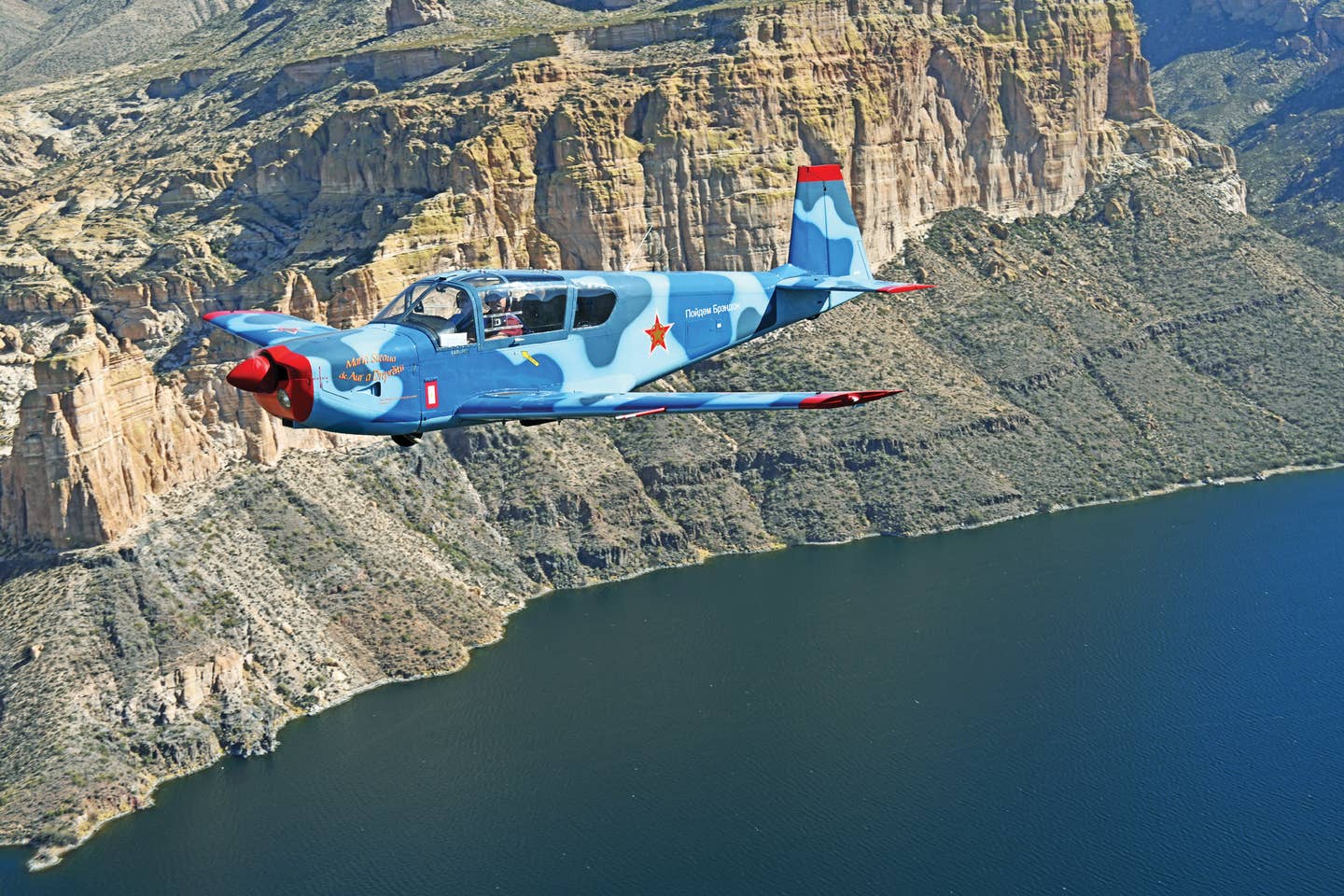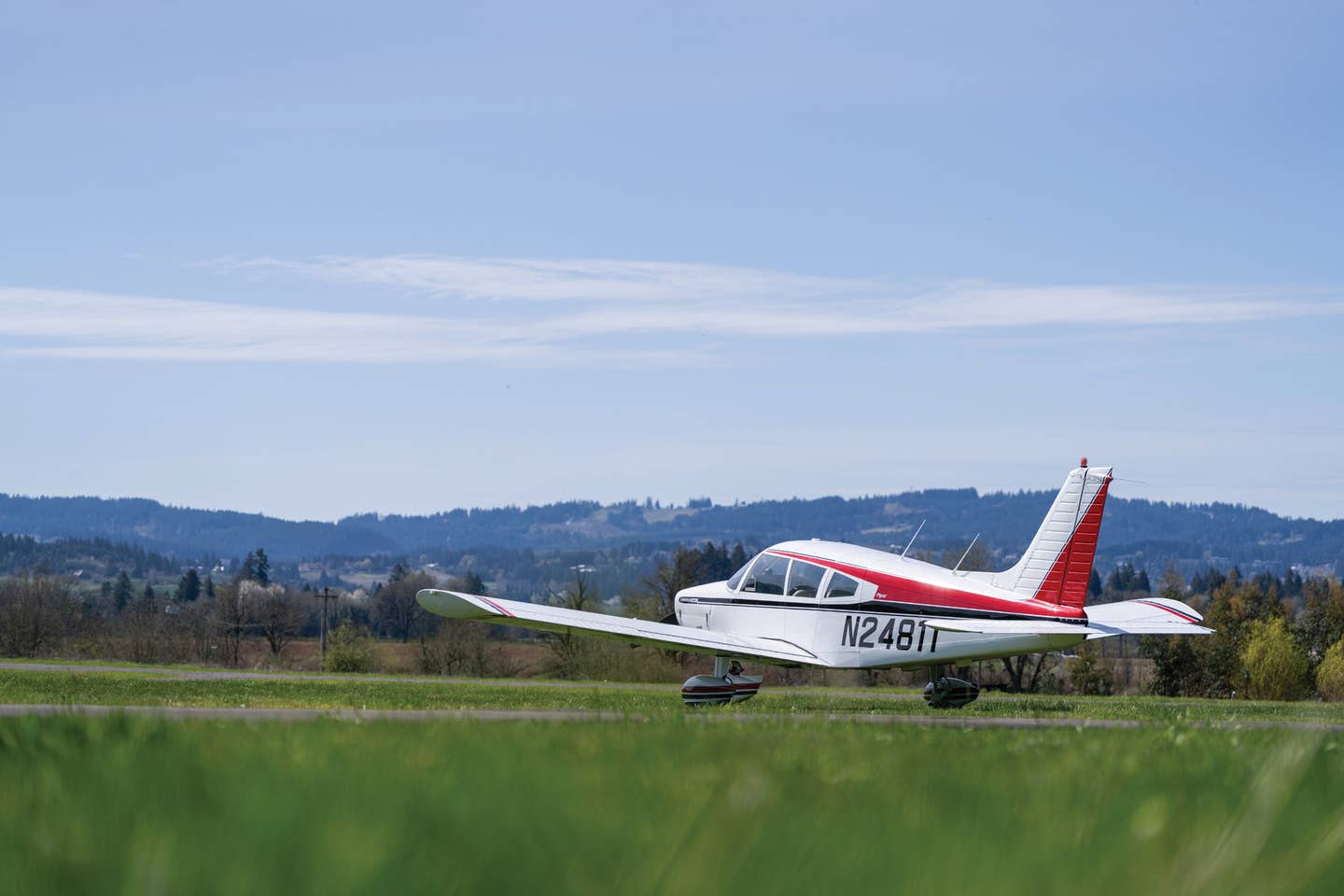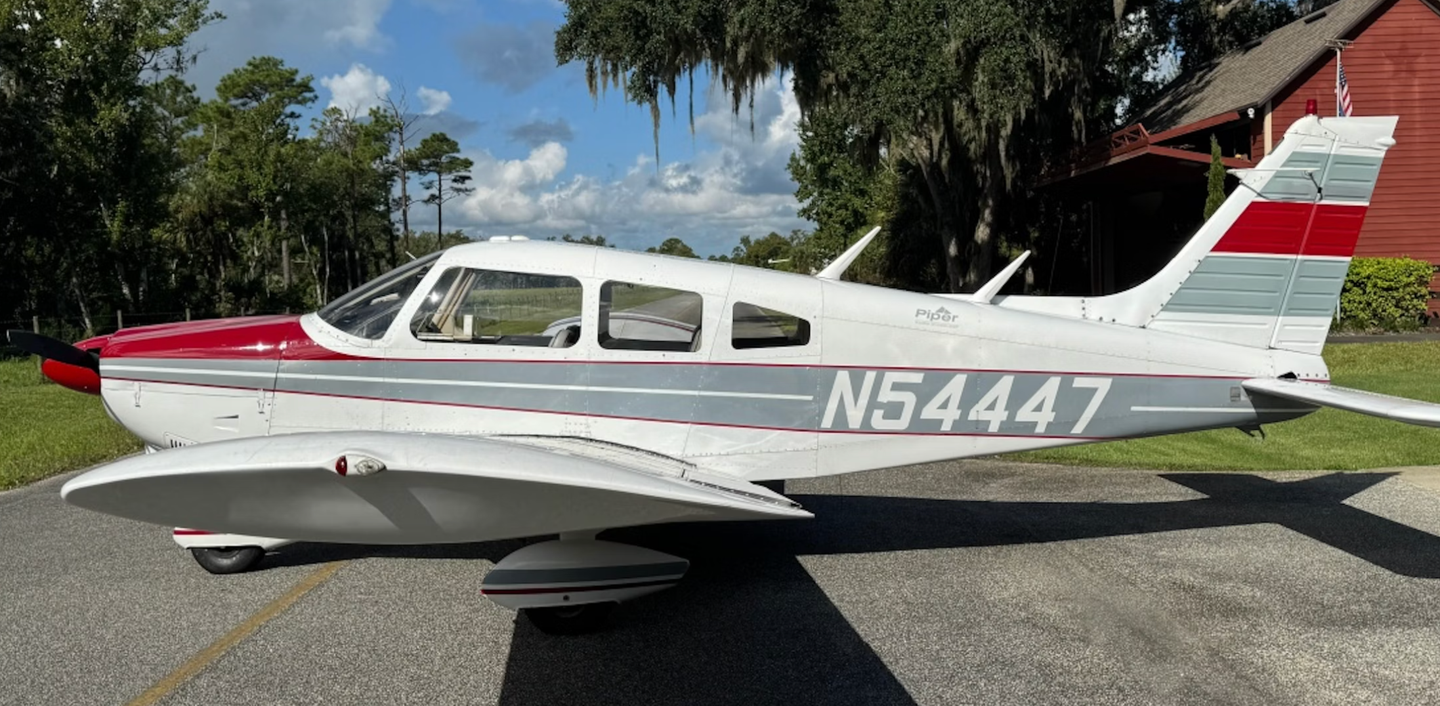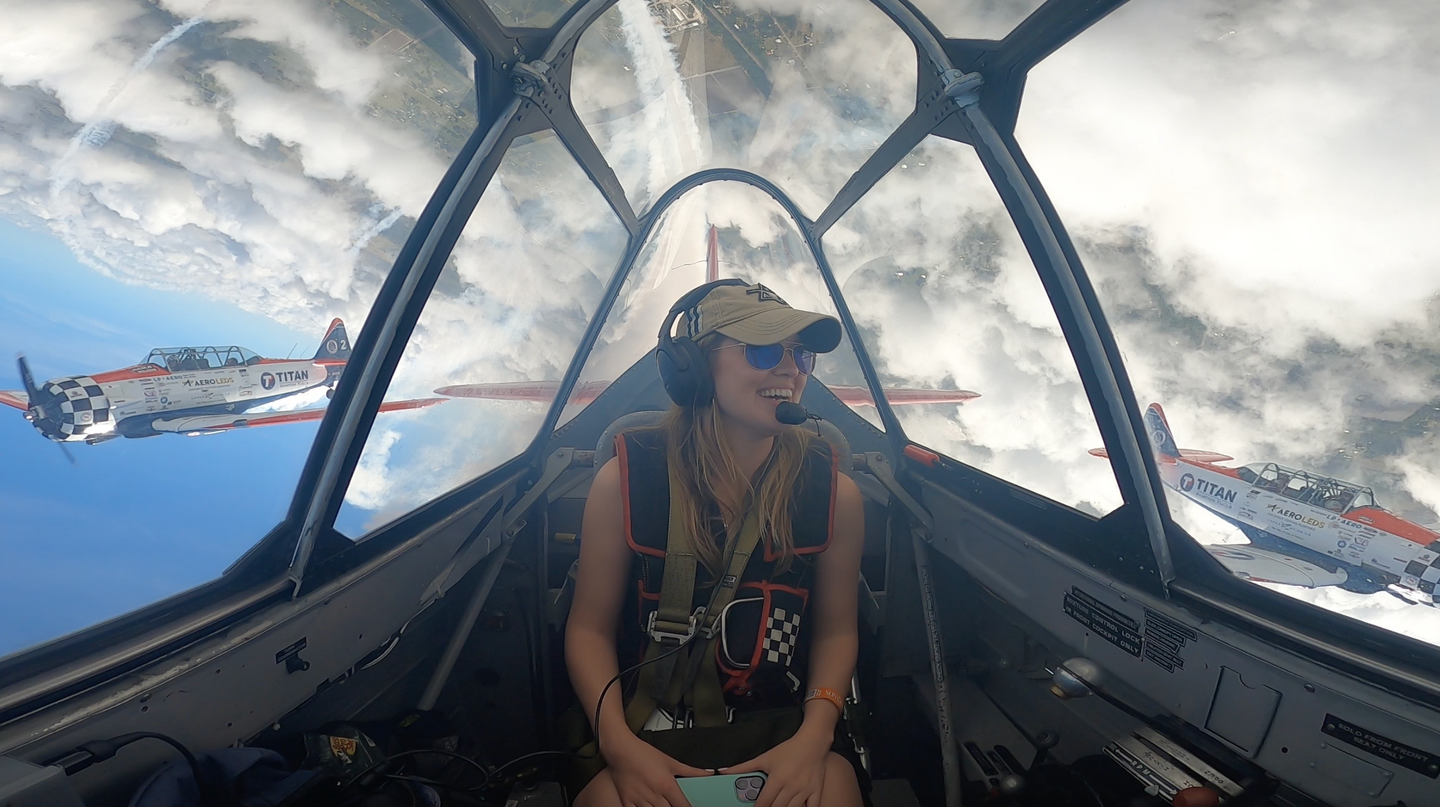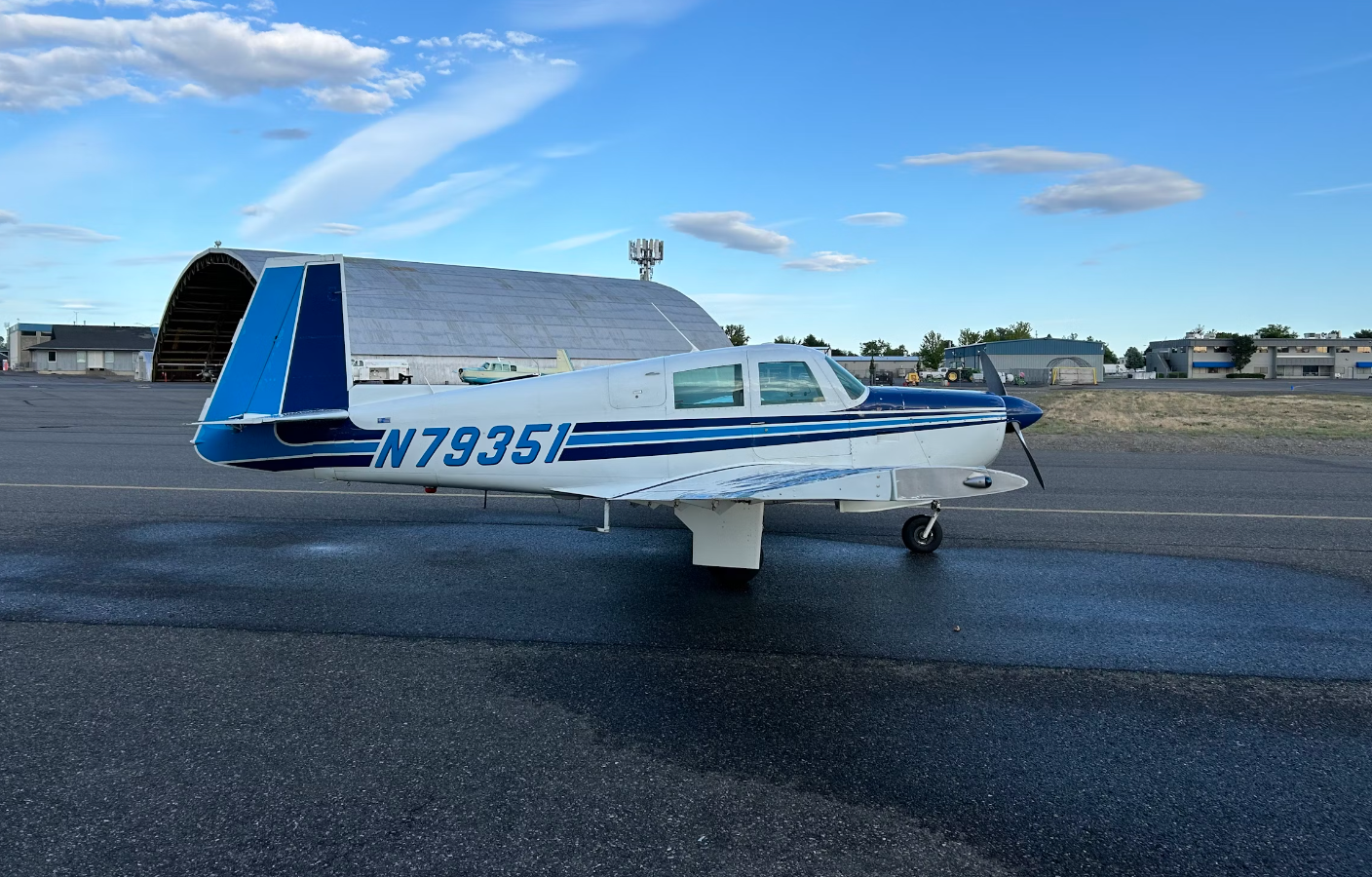Trading Red Carpets for Red Retardant
AirTractor 802 pilot shares his firefighting story.
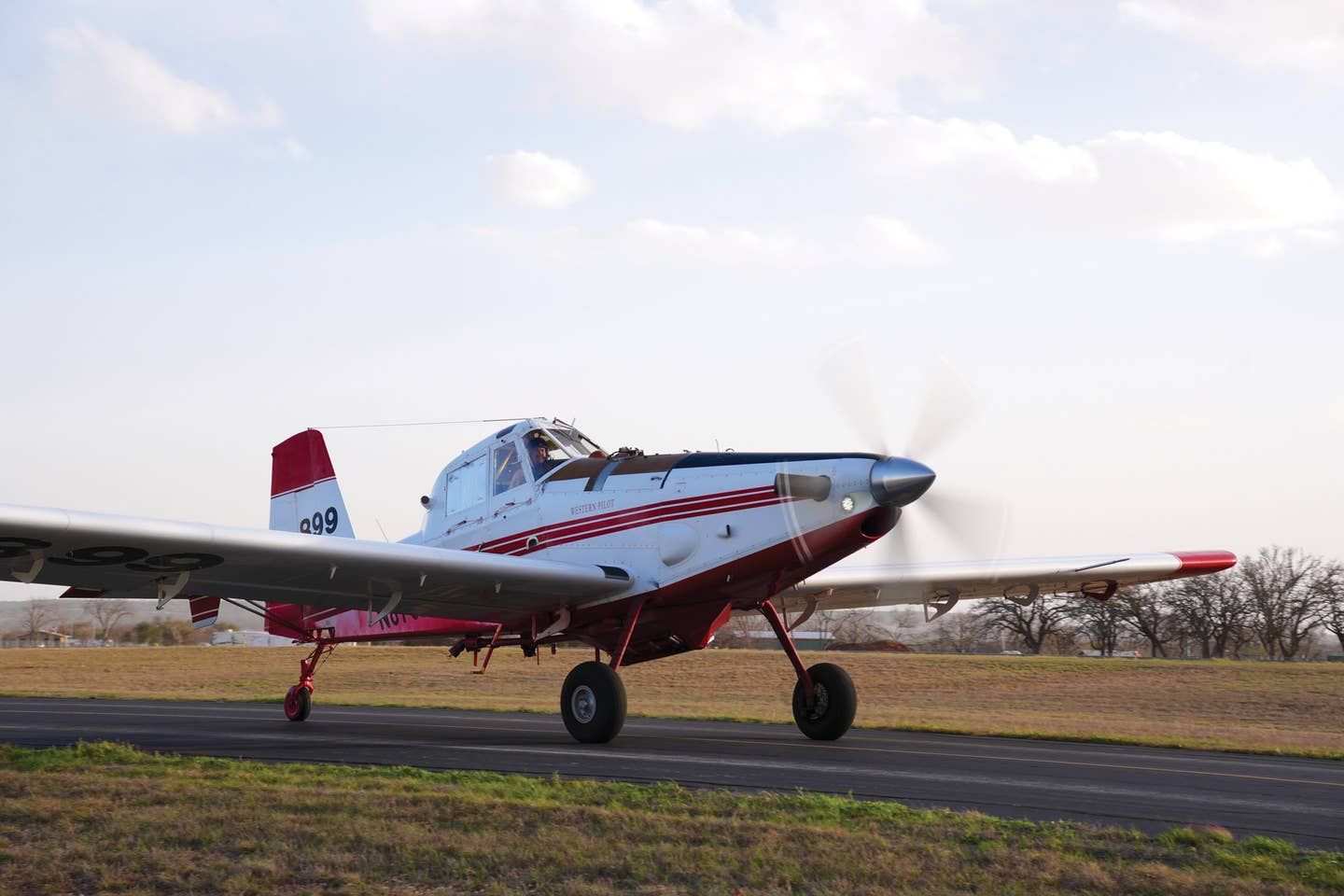
Photos By: Jon Burchfield, Cayla McLeod
It was a beautiful spring evening in south Texas.
As usual, I was out on my evening walk around the Gillespie County Airport (T82) after my post-work CrossFit death session. Although I’m new to the area, if I’ve learned anything about hanging around at a decently popular and unique airport like the one here in Fredericksburg, you never know what kind of airplane you might see, or who you might meet.
As I walked down toward the run-up area along Runway 14, I heard the faint sound of a turbine closing in. Upon closer inspection (and with the help of my prescription sunglasses) I looked up and saw a single-engine air tanker above midfield, joining the right downwind for Runway 14.
Like the excitable little kid at heart that I still am, I giddily walked my way toward the taxiway to get an up-close look at the AirTractor 802’s landing. With a firm, but also slightly cute squeak-squeak of the tires, the pilot masterfully executed a wheel landing and made the first turn off just past the 1,000-foot markers.
With the to-do lists of the day behind me, I decided to follow the AirTractor to its parking spot. If you know me, I’m always looking for a good story to tell, and with the recent wildfires across Southern California (and eventually right here in Texas), I figured this might be one worth telling.
As the AirTractor taxied toward the eastern side of the field, behind several rows of hangars, it was like someone had pushed the copy-and-paste button. Two more identical, red-and-white AirTractors were also sitting on the tucked-away portion of the ramp. As I approached, I could see red fire retardant covering the bottom half of all three fuselages, so I figured this display was much more than a matter of ramp appeal. These airplanes were here to do a job.
“That’ll be $10,” said a pilot in a khaki flight suit as I tucked away my phone after snapping a picture of the AirTractors. “I’ve got a dollar,” I said jokingly.
After shaking hands, the pilot introduced himself as Nathan Stubbs, an AirTractor pilot operating for Western Pilot Service, out of Buckeye, Arizona. Noticing his sunburned face, and slightly sweaty and disheveled helmet hair, I could tell he had just put in a hard day’s worth of work.
“Where were y’all flying today?” I asked.
“We just got back from fighting fires on the coast,” Stubbs said. Unfortunately, due to the confidential work that these pilots do, they couldn’t share too much with me regarding this specific mission, or any mission for that matter, but I did get the chance to sit down with Stubbs a few days later to meet his crew, climb all over the airplane, and get the scoop (pun intended) on his firefighting journey.
“Believe it or not, I’ve only got about 100 hours of AirTractor time,” Stubbs said as we drove down to the FBO for our interview.
“Perfect, that means your path into this firefighting world is fresh in your mind,” I said.
Like so many, Stubbs started out his aviation journey in college. After graduating, he went to work flying a Cessna 172RG as a pipeline patrol pilot and soon after found himself as a right-seater flying regional jets.
“I didn’t last long doing that,” Stubbs said. “At that time we were making $20,000 a year. I went right back to flying pipeline patrol and doing charters for that same outfit.”
What eventually turned into flying as PIC in the King Air evolved into a few different Part 91 flying jobs on a Lear 45, CJ4, Falcon 50, and most recently on a Global and Citation 10.
“But I got laid off during COVID,” he said. During his pandemic downtime, Stubbs travelled to Bainbridge, Georgia, and learned with AG Flight Pilot Training. With a background in Texas ranching, agricultural aviation was a logical step.
“I trained in Georgia for about two months,” Stubbs said. “But I went in with a tailwheel endorsement, and probably 200 or 300 hours flying tailwheel in an RV-7, Legend Cub, and Super Decathlon.”
Although Stubbs was ahead of the game in the tailwheel category, Agricultural Aviation magazine states that AG Flight “can start students with zero time and bring them all the way through the ag pilot training program in four to six months.”
Training in a fleet of Citabrias, Stubbs went through initial familiarization flights and then graduated to flying a Citabria equipped with a light bar (which is a spray pilot’s GPS) to practice low-level flying, working the light bar, and negotiating turns and distances to the next spray line. From there, Stubbs took what he learned in the Citabria and was able to apply it in real time with spraying water in a Pawnee.
“It was about 40 hours of flight time all together,” said Stubbs.
Although it was a couple years before Stubbs found himself in the front seat of the AirTractor, when his current employer called.
“I would cut my finger off to do this job,” he said.
Not requiring any loss of limb, Western Pilot Service’s AirTractor training regimen began with a Cessna 180 and progressed into the Cessna 188 Ag Truck, the 180 and 185’s lesser known ag cousin. From there, he moved into the 802.
“The AirTractor is a big ol’ tank,” Stubbs said. “It’s not very stable. You have to fly it the whole time and you can’t trim it out. Other than that, it’s a really capable airplane, plenty of power, and it gets us out of some pretty tight spots. We’re in the mountains quite a bit, so they’re very capable.”
The AirTractor’s Pratt & Whitney PT6A-67G engine produces 1,340 hp and the F model produces 1,600 hp.
“There is nothing that I’ve flown that compares to the AirTractor,” he said. “It's a whole different beast, but I enjoy it.”
Every day looks slightly different for a firefighting pilot, but Stubbs describes a typical one.
“[It would be] nothing happening,” he said. “But when we do get a dispatch, I wouldn’t call it chaotic, but there is a sense of urgency. We’re flying airplanes, so slow is fast. On our kneeboards we have coordinates and all of our frequencies we’re going to use—air to air, air to ground, dispatch. We get those coordinates into ForeFlight, then we compare them to each other. As long as those [sync] up, we’re good to go.”
Support crew and drivers ensure the airplanes are ready for their pilots.
“[All that’s left is a] quick walkaround to make sure all the aileron locks are off, and crawl in and start loading,” he said. “Then we fire up and go.”
The scene of a fire can be a busy one. Like air traffic controllers (ATC) on the ground, aerial firefighters have their own kind of controllers that work from the air.
“Air attack is made up of very experienced firefighters that got into the aviation side of it,” he said. “They know a lot about fire and fire anatomy. They’re not quite like an air traffic controller, more of a fire area controller, but they do clear us into the airspace, and they’re in the air with us. They’re our eyes in the sky.”
Commonly flying Commanders, air attack is strategically placed at 2,500 feet above the fire, whereas the single-engine air tankers (commonly referred to as SEATs) operate at 1,500 feet above the blaze.
“Sometimes it’s really easy, and we won’t even have to make a full orbit,” Stubbs said. “But sometimes it is much more complicated than that. There can be helicopters working buckets, DC-10s, RJs, and now they’re getting into some Q400s. Those fires are very stressful, but I don’t think about the stress in the moment. I’m really paying attention to what’s going on around me, so in a way, that’s kind of calming. But it’s definitely a heightened awareness.”
Although exhilarating, Stubbs pointed out that the life of a fire pilot is hardly routine.
“There’s no limit to where we will go—it’s whoever will take us,” he said. “I’ve been to Minnesota, Texas, Idaho, and California so far. Being gone for four months at a time is the hardest part about this job, but I like the fact that we’re helping people, and I get to have fun at the same time. I think it’s the best job in the world. There’s not many of us out there, but there is a large need for more SEAT pilots.”
If a career in aerial firefighting sounds enticing, Stubbs recommends having around 1,500 hours of total flight time, tailwheel and mountain flying experience, and believe it or not, confidence on the radio is also key.
“There were days where there were no patterns, you just got to drop and get out of there,” he said. “But they’ve really buckled down on that stuff. Having the professional pilot operational and radio side of things nailed down is a huge plus.”
I asked Stubbs if he had ever visited a town to see the impact of his life and property saving efforts.
“I guess I’ve never been to a place where we’ve been based and fought a fire, because we always ferry quite a distance,” he said. Well, little did we know that Stubbs would very soon have that chance.
Three days after our interview, I pulled out of my driveway on a gusty, sunny Saturday afternoon. As I came to the top of a hill, I couldn’t believe my eyes. A massive plume of black smoke was travelling west to east toward Austin.
Instinctively, I pulled up FlightAware, and sure enough, Stubbs, accompanied by the two other 802s, a Blackhawk helicopter, and a large tanker were orbiting the wildfire. It was spreading quickly due to 35-knot gusts and brutally dry conditions. Located only 11 miles north of downtown Fredericksburg and only 10 nm north of the Gillespie County Airport, the fire was an imminent threat to life, livestock, and property.
Although I was originally heading to a vineyard for a glass of wine, I looked over in my passenger seat and saw my camera was there, ready to go. With a slight deviation, I headed to the airport to document Stubbs and his team in action.
A well-oiled machine, the drivers and loaders were at the ready, and like clockwork, as each of the AirTractors landed, they taxied to the loading area to be filled with more retardant. Although the AirTractors can carry up to 800 gallons at a time, it doesn’t last long. Without shutting down, the pilots got a short break as they were refilled then taxied back to the runway for another round.
The entire cycle of landing for a retardant refill, taking off, fighting the fire, and landing again encompassed about 50 minutes—an impressive feat.
The Crabapple Fire, as it became known, engulfed almost 10,000 acres of the Texas Hill Country over three days and left several Gillespie County residents without a home. Although devastating, it could have been far worse without the lifesaving work of Stubbs and his team.
“We must rely on so many resources, knowing our vulnerabilities to large wildfires, and I rest easier knowing we have these added AirTractor 802 pilots in conjunction with the military, forestry service, and our outstanding first responders on the ground,” said Fredericksburg Mayor Jeryl Hoover. “This most recent event that burned 10,000 acres in our county reminds us all how fortunate we are to have access to these pilots.”
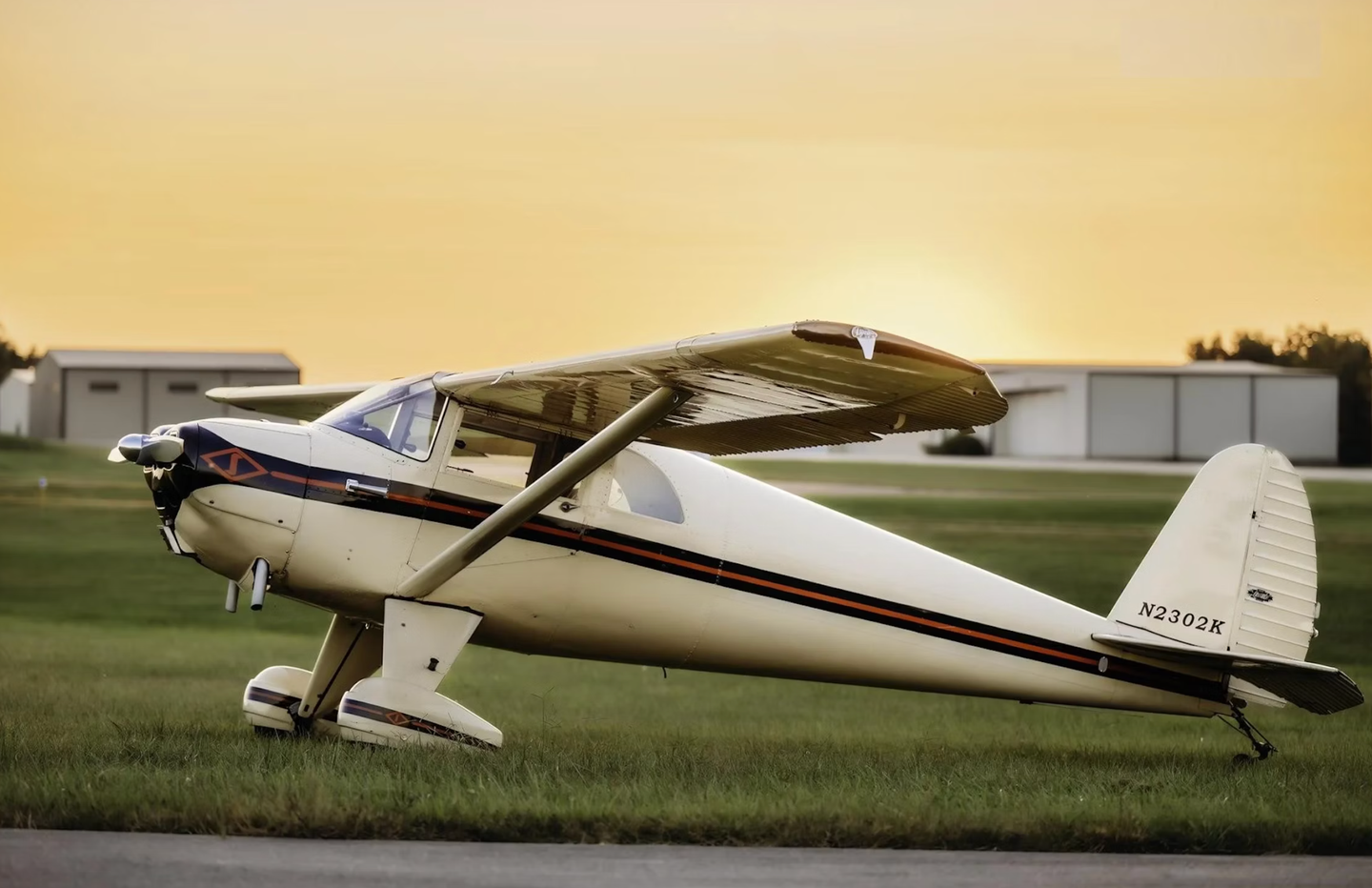
Subscribe to Our Newsletter
Get the latest Plane & Pilot Magazine stories delivered directly to your inbox


